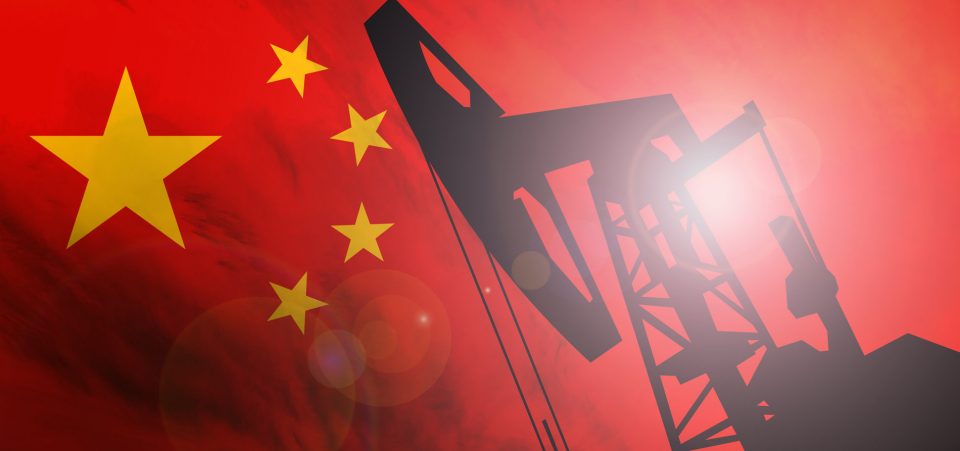China Wants to Buy Oil in Gold, Delivering a Deadly Blow to the Dollar
The world is changing rapidly. But the good old-fashioned concept of challenging a rule or an accepted truth remains alive and well. At least in China, that is. Keep an eye on the financial markets, global economic alliances, the price of oil, and the price of gold. That is what China wants to change. Predictions of $10,000-per-ounce gold start to become credible.
China is considering a Bobby Fisher chess move on the petrodollar, which could propel the price of gold well beyond the current level. The chosen economic-political move would also leave the U.S. dollar defenseless in the face of a landslide. Indeed, the Federal Reserve won’t have the tools to prevent the potential onslaught that the dollar is about to face.
Both China and Russia have, in recent years, bought huge volumes of gold, exploiting the long period of lower-than-usual gold prices. They used it to a large extent to increase the currency reserves of the respective central banks, freeing dollars and euros. China wants nothing less than to adopt a crude oil futures contract priced in gold-convertible yuan. (Source: “Moscow And Beijing Join Forces To Bypass US Dollar In Global Markets, Shift To Gold Trade,” Zero Hedge, April 2, 2017.)
The U.S. Has Long Stopped Being a Leader
The mainstream media continues to focus on the political statements that do not count for almost anything, starting with the president of the United States. In the narrow sense of the term, presidents no longer have any power to affect changes. They are only there to introduce them, pretend to agree with them, and to manage the consequences.
Barack Obama was just such a sitting duck. Donald Trump may try to avoid falling into this trap, but, as the attack against a Syrian airbase last April showed, he already has succumbed.
Nevertheless, the U.S. must now come to terms with the fact that China is going to overtake it in the global power game. Yet, the change that will make this happen exists very much within the United States itself. What can be more American than the U.S. dollar?
China seems determined to shed its reliance on the U.S. dollar, which it adopted and has used for decades, investing its capital in the United States.
In this sense, there have been louder rumors that Beijing wants to price oil according to its own benchmark. That is, China wants to shed the dollar-based oil price and challenge the Brent, WTI, and Dubai-Oman benchmarks. In their place, China will bargain and exchange on Hong Kong and Shanghai exchanges. The key point is that China would pay for crude oil in a currency other than U.S. dollar. (Source: “China sees new world order with oil benchmark backed by gold,” Nikkei Asian Review, September 1, 2017.)
All three indices or benchmarks sell crude in dollars. This has forced the global oil market to function only according to the U.S. dollar. Many Americans do not realize the advantage they have enjoyed because of this arrangement.
Having the world pay for oil in dollars has allowed the U.S. to have greater control over its economy and finances than other countries.
The dollar is both a domestic currency and international reserve currency, as well as a raw material pricing unit. The thousands of billions of dollars that the Federal Reserve has printed over these past several years of quantitative easing (QE) have not achieved the goal of lowering the dollar value to promote more exports and economic growth.
The Collapse of the Dollar by Way of Gold
In 1971, President Richard Nixon abolished the fixed parity between gold and the dollar, the world’s fixed exchange rate system. He replaced the gold standard with one that allows the Fed to print dollars at will to pay for ever-increasing imports. The formula has worked, defying all macroeconomic rules, according to which the U.S. would have drowned in a flood like that of 1920s German mark hyperinflation.
If, or when, somebody seriously starts trading oil using other currencies or means of payment (such as gold), it will imply a significant erosion of the global power of the dollar. More importantly, this benchmark will be the basis for gold convertible oil.
This suggests a much higher demand for the precious metal, henceforth confined to “safe haven” investment status when the risks of war rise. In fact, gold could replace the dollar as a means of exchange. So-called “axis of evil” countries—Iran and Venezuela, for starters—could shift from the dollar to gold.
The process has begun. China Energy Corporation, a fast-growing energy conglomerate in the world of oil and gas, will acquire almost 15% of Rosneft—the world’s first oil group among listed companies—paying $ 9.1 billion. The majority stake remains firmly in the hands of the Russian state. Still, the Sino-Russian strategic alliance will guarantee China—now the world’s top importer of crude oil—more than eight million barrels a day from Russia. (Source: “CEFC China Energy buys $9bn stake in Rosneft,” The Financial Times, September 8, 2017.)
China’s goal is to guarantee more oil for itself and less dependence on the U.S. and its vassals. It leaves less oil available to the Europeans and NATO members, given that China will be taking up a far bigger share of production. Meanwhile, the U.S. will have to thrive in a world where its dollar no longer counts and where gold and oil both cost several orders of magnitude more.






